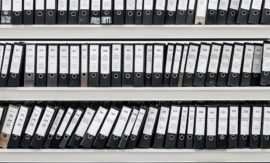Intended learning outcomes: Present the data structure of customers and suppliers. Describe the general data structure of orders in sales and distribution, production, and procurement. Disclose the data structure of the order and partial order header as well as the order position.
The order business object was introduced in Section 1.2.1. It describes all types of order within the supply chain. This section describes in detail the order objects used in sales and distribution, production, and procurement. Section 17.5 (The Management of Product and Engineering Data) describes the R&D order in greater depth. Stock status and statistics are also discussed in this section since they are related to order objects.
Course section 17.1: Subsections and their intended learning outcomes

17.1 Order Data in Sales, Distribution, Production, and Procurement
Intended learning outcomes: Present the data structure of customers and suppliers. Describe the general data structure of orders in sales and distribution, production, and procurement. Disclose the data structure of the order and partial order header as well as the order position.

17.1.1 Customer and Supplier Data, and the Corporate Group Structure
Intended learning outcomes: Present the business object “business partner”: customer and supplier data. Identify the corporate group structure.

17.1.2 The General Data Structure of Orders in Sales and Distribution, Production, and Procurement
Intended learning outcomes: Explain the general data structure of an order in sales and distribution, production, or procurement. Disclose the basic object classes in an order database.

17.1.3 The Order Header Data and Partial Order Header Data
Intended learning outcomes: Produce an overview on the object classes “order header”, and “partial order header”. Present in detail the attributes of the object classes “order header”, and “partial order header”.

17.1.4 The Order Position Data
Intended learning outcomes: Produce an overview on the object class “order position”. Present in detail the attributes of the object class “order position”.

17.1.5 Inventories and Inventory Transactions Data
Intended learning outcomes: Produce an overview on the object classes for inventories. Present in detail the attributes of the object class “inventory transaction”.
Course 17: Sections and their intended learning outcomes

Course 17 – Representation and System Management of Logistic Objects
Intended learning outcomes: Describe order data in sales, distribution, production, and procurement. Explain in detail master data for products and processes. Disclose extensions arising from the variant-oriented and the processor-oriented concepts. Produce an overview on the management of product and engineering data.

17.1 Order Data in Sales, Distribution, Production, and Procurement
Intended learning outcomes: Present the data structure of customers and suppliers. Describe the general data structure of orders in sales and distribution, production, and procurement. Disclose the data structure of the order and partial order header as well as the order position.

17.2 The Master Data for Products and Processes
Intended learning outcomes: Describe master data of products, components, and operations. Explain the data structure of item master, bill of material, and where-used list. Disclose the data structure of work center master data, the work center hierarchy, as well as for operation, routing sheet, production equipment, bill of production equipment, and bill of tools.

17.3 Extensions Arising from the Variant-Oriented Concept
Intended learning outcomes: Produce an overview on expert systems and knowledge-based systems. Explain the implementation of production rules. Present a data model for parameterized representation of a product family.

17.4 Extensions Arising from the Processor-Oriented Concept
Intended learning outcomes: Explain objects such as process, technology, and the processor-oriented production structure. Describe objects for lot control.

17.5 The Management of Product Data and Product Life Cycle Data
Intended learning outcomes: Produce an overview on product life cycle management and engineering data management (EDM). Explain the engineering database as part of an IT system. Describe the data and functional model for general EDM tasks. Present object classes and functions for release and engineering change control.

17.6 Summary
.

17.7 Keywords
.

17.8 Scenarios and Exercises
Intended learning outcomes: Elaborate different forms of representing bills of material and where-used lists. Identify basic master data objects.
